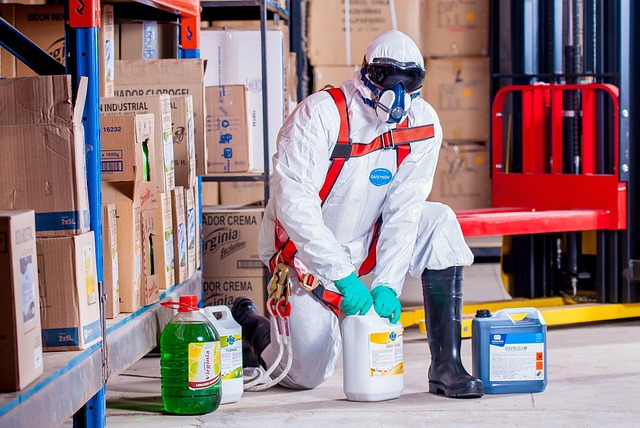Integrating fire and carbon dioxide (CO₂) sensors in urban environments significantly enhances urban home security solutions. These advanced sensors provide early detection of fires, gas leaks, and ventilation issues, enabling swift responses. Leveraging wireless connectivity and cloud-based monitoring, these compact, efficient, and highly sensitive sensors reduce false alarms, while smartphone apps and machine learning ensure automatic alerts for unusual activities. Regular calibration and system checks facilitate optimal performance, integrating with smart city infrastructure to provide timely warnings and efficient resource allocation.
In today’s bustling urban environments, ensuring safety is paramount. Integrated fire and CO2 sensors emerge as game-changers in urban home security solutions, addressing critical challenges. This article delves into understanding the complex urban safety landscape and explores how these sensors provide multiple benefits. We examine modern technologies, their key features, and the implementation strategies for optimal urban safety. Discover how these innovative systems revolutionize protection, offering peace of mind in vibrant cityscapes.
- Understanding Urban Safety Challenges and the Role of Integrated Fire and CO₂ Sensors
- Benefits of Integrating Fire and Carbon Dioxide (CO₂) Sensors in Urban Environments
- Key Features and Technologies in Modern Urban Home Security Solutions
- Implementing and Maintaining Integrated Fire and CO₂ Sensor Systems for Optimal Urban Safety
Understanding Urban Safety Challenges and the Role of Integrated Fire and CO₂ Sensors

Urban safety is a multifaceted challenge, especially in densely populated areas where the risk of fire and carbon monoxide (CO₂) buildup can have devastating consequences. Traditional detection systems often rely on separate sensors for smoke and gas, but these have limitations in terms of both accuracy and response time. In today’s digital era, there’s a growing need for integrated fire and CO₂ sensors as part of urban home security solutions.
These advanced sensors combine the capabilities to detect both fires and hazardous levels of CO₂, providing a comprehensive view of potential dangers. By integrating these technologies, buildings can have smarter, more responsive safety systems that alert occupants and emergency services faster. This proactive approach not only enhances urban safety but also minimizes damage and loss of life in high-density environments.
Benefits of Integrating Fire and Carbon Dioxide (CO₂) Sensors in Urban Environments

Integrating fire and carbon dioxide (CO₂) sensors in urban environments offers a multifaceted approach to enhancing urban home security solutions. These integrated systems provide early detection and monitoring capabilities, enabling swift responses to both fire hazards and unsafe atmospheric conditions. By combining sensitive fire detection with real-time CO₂ level tracking, smart cities can proactively address potential risks.
Such integration facilitates comprehensive risk management. Fire sensors alert occupants and emergency services promptly, while CO₂ sensors ensure the presence of a dangerous gas that may indicate a wider issue, such as a leak or inadequate ventilation. This dual functionality contributes to safer urban living, empowering residents with knowledge and peace of mind.
Key Features and Technologies in Modern Urban Home Security Solutions

Modern urban home security solutions leverage advanced technologies to enhance safety and peace of mind for residents. Key features include intelligent integration of fire and CO2 sensors, enabling early detection and response to potential hazards. These sensors are designed to be compact, efficient, and highly sensitive, capable of distinguishing between smoke particles from a fire and common household substances, thus reducing false alarms.
Wireless connectivity and cloud-based monitoring systems further elevate urban home security solutions. This allows users to remotely access real-time data and control various security devices via smartphone apps. Advanced algorithms and machine learning capabilities enable the system to learn patterns and automatically alert residents or authorities when unusual activities are detected, ensuring prompt response to any threats.
Implementing and Maintaining Integrated Fire and CO₂ Sensor Systems for Optimal Urban Safety

Implementing and maintaining integrated fire and CO₂ sensor systems is a strategic move towards enhancing urban home security solutions. These sensors, designed to work in harmony, offer a multi-faceted approach to safety. By combining fire detection and carbon dioxide monitoring, cities can proactively address potential hazards. Fire sensors, with their advanced technology, ensure swift identification of flames or smoke, while CO₂ sensors provide critical information about indoor air quality, especially in enclosed spaces where rapid gas accumulation could go unnoticed.
Regular calibration and system checks are essential to maintain optimal performance. Urban areas benefit from the early warning systems these sensors provide, enabling authorities to respond promptly to emergencies. Moreover, integrated sensor networks can communicate with existing smart city infrastructure, facilitating efficient resource allocation and a more coordinated approach to urban safety management.
Integrated fire and CO2 sensors are game-changers for urban safety, offering a comprehensive approach to protecting bustling metropolis. By seamlessly combining these technologies, modern urban home security solutions can provide early detection of both fires and hazardous CO2 levels, enabling swift action and potentially saving lives. Implementing and maintaining these systems requires careful consideration of key features and technologies, ensuring optimal performance in navigating the complex landscape of urban safety challenges. In summary, investing in integrated fire and CO2 sensors is a vital step towards enhancing urban resilience and fostering safer communities.
